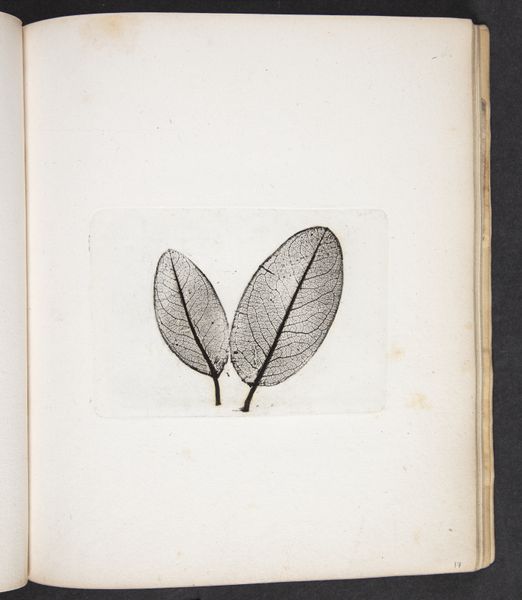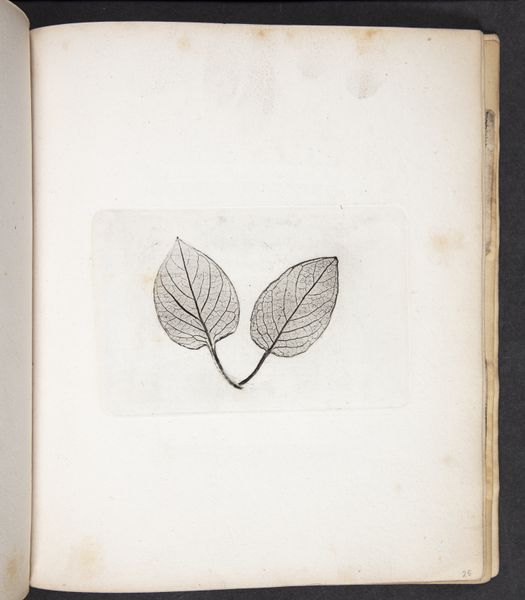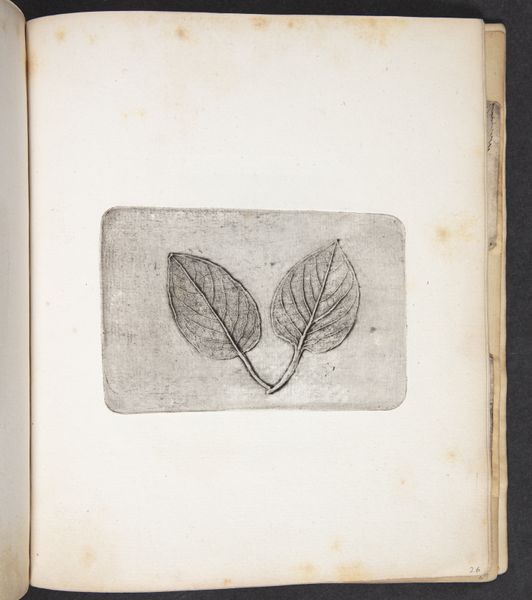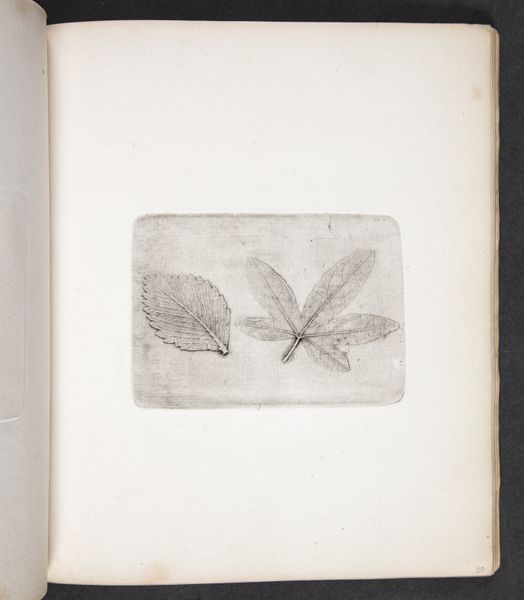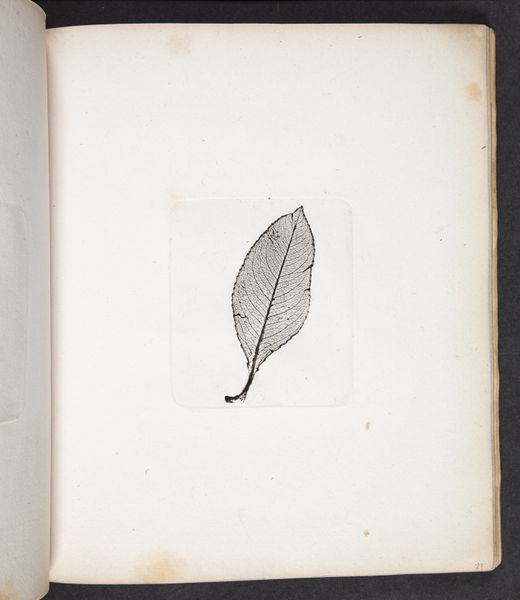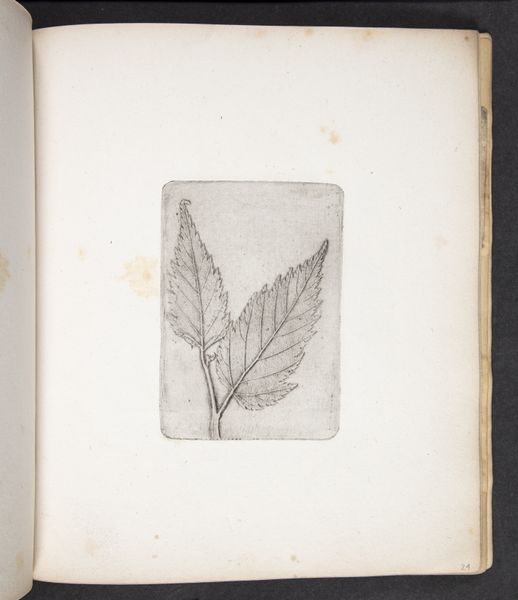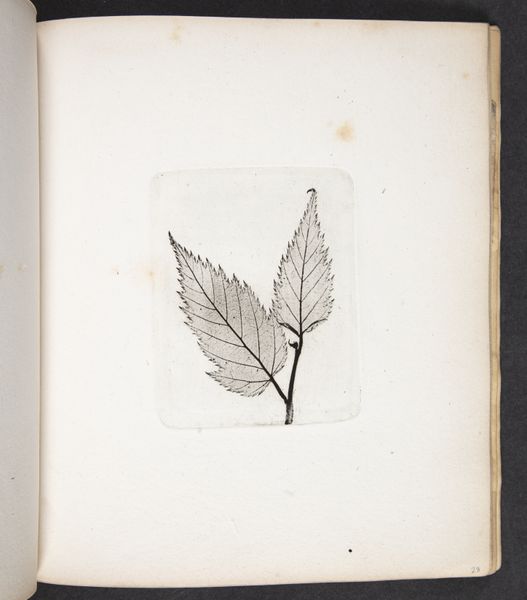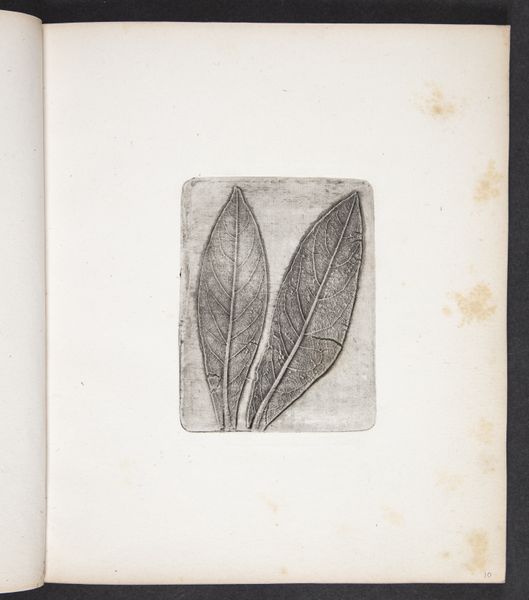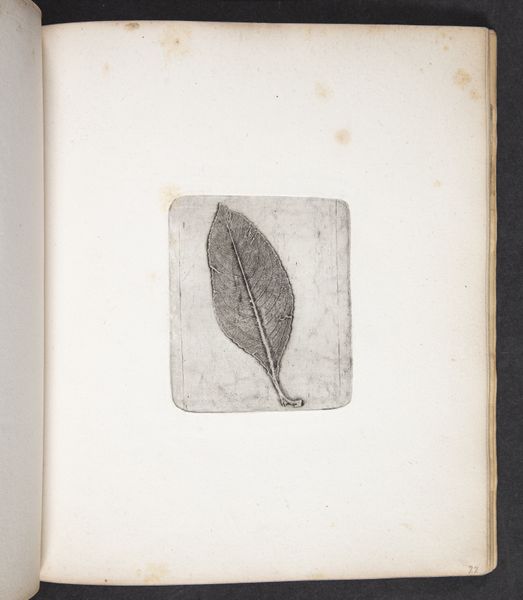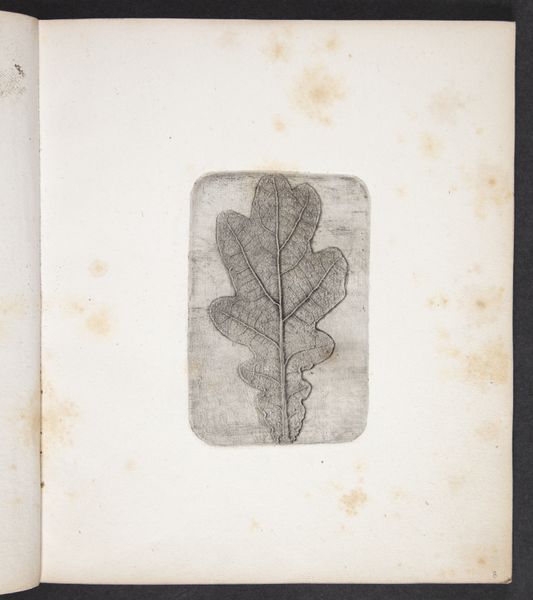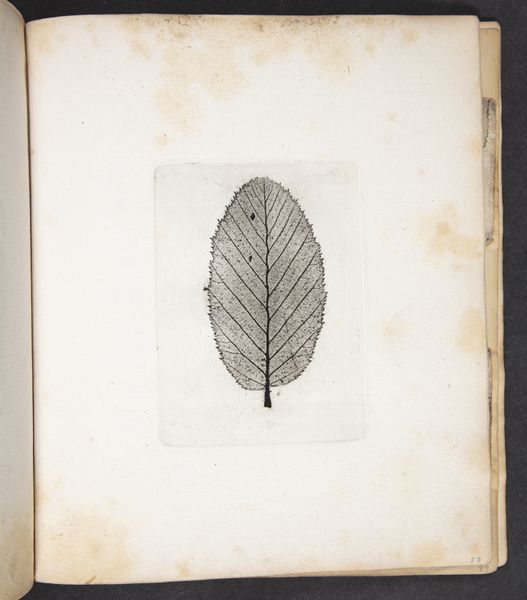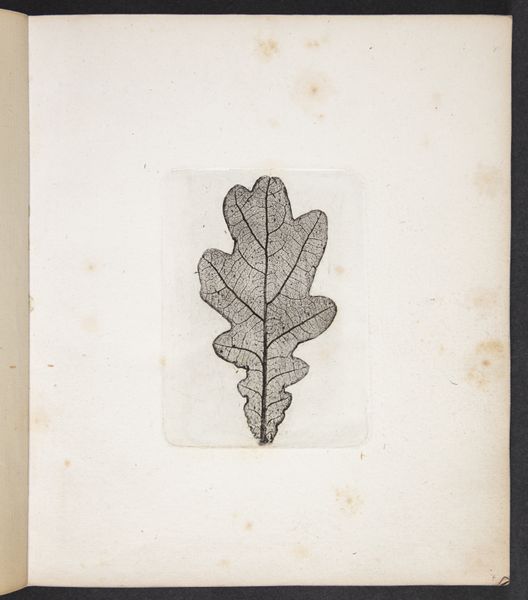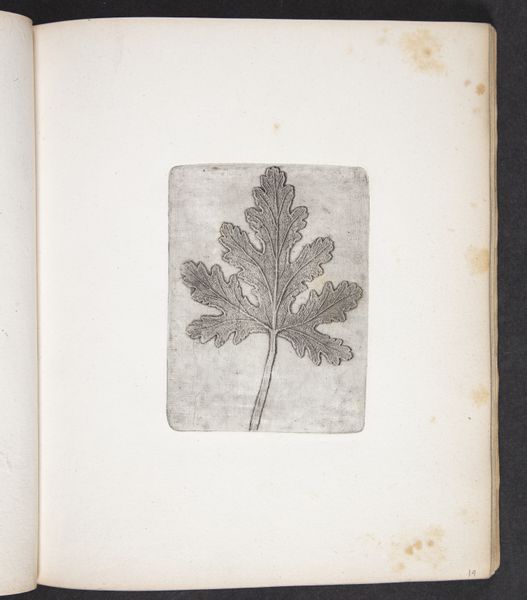
drawing, print, paper, ink
#
drawing
# print
#
paper
#
ink
#
naturalism
Dimensions: 207 mm (height) x 182 mm (width) (Bladmål), 77 mm (height) x 100 mm (width) (Plademål)
Curator: At first glance, this is simply beautiful—two delicately rendered leaf prints rendered in ink on paper. The fine lines and subtle tonal variations capture the natural forms with grace. Editor: Well, indeed. We’re looking at “Aftryk af blade”—or “Leaf Prints”—created in 1833 by Peter Larsen Kyhl, and presently held in the collection of the SMK, the Statens Museum for Kunst. Kyhl was clearly engaging with the Romanticism present in much of the art made at this time. Curator: Yes, and these are not merely illustrations. Kyhl demonstrates a naturalist leaning with precision in line and tone to almost scientifically dissect organic structures of both leaf specimens. We have one palmate leaf, perhaps a sycamore, contrasted against a smaller pinnate elm or hazel leaf. The composition allows the negative space around and within them to act as a pictorial element on par with its graphite lines. Editor: And speaking about those delicate prints, it is a remarkable visual demonstration about Denmark's broader cultural landscape at the time. During this period, there was rising bourgeois interest in scientific pursuits coupled with increasing emphasis placed on empirical knowledge. Think about how artists worked in concert with scientific advancements within the 19th century: Kyhl isn't just showing leaves; he is offering accessible imagery aligning botanical study into his audiences’ milieu. Curator: Precisely. There’s something intrinsically touching how each detailed vein becomes visible—like seeing x-rays which exposes these natural forms revealing what composes them structurally internally as the outer skin fades partially away; what remains appears ephemeral but also steadfast enough withstand decades hence. The use light against each detailed shadow allows the shapes feel fully-fleshed-out too although ultimately, each artwork renders something still very flat Editor: And as an objet d'art situated inside the national collection, we ought recognize its purpose. By emphasizing this sense detailed representation – indeed as part its educational mission at such institutions during the period aimed informating while also directing people towards appreciate beauty of environment at large–the medium further contributed enriching society overall through art making both available yet accessible. Curator: I hadn’t quite thought of it that way—as a tool for education in its own time, made to inform the growing public. This gives added significance as we consider what constitutes visual literacy and appreciation over changing values since then... Editor: Exactly; while seeming restrained visually perhaps reflecting more broader didactic aspiration through understatedness style where accuracy rather then flashy art dominates… this particular work carries a bigger punch reflecting shifts over 200 plus yrs on perceptions from nature now, back then— Curator: Agreed. After considering art and scientific history contextualized both now, then — it underscores Kyhl commitment connecting to visual interpretation about something far larger too
Comments
No comments
Be the first to comment and join the conversation on the ultimate creative platform.
